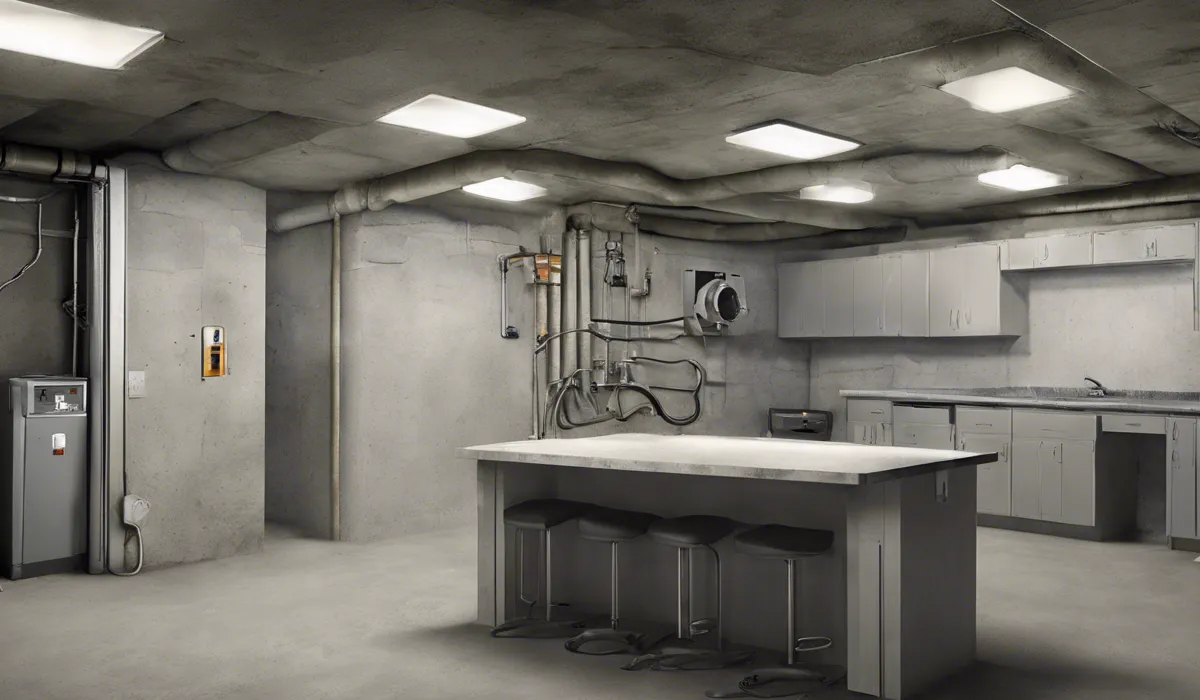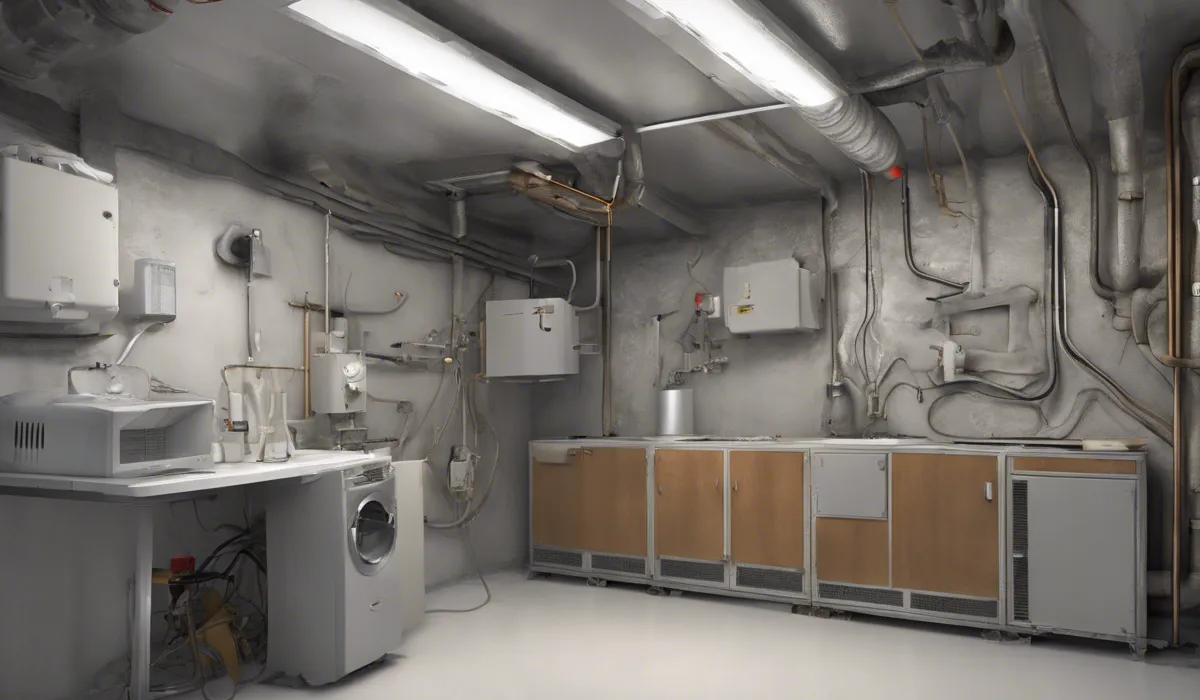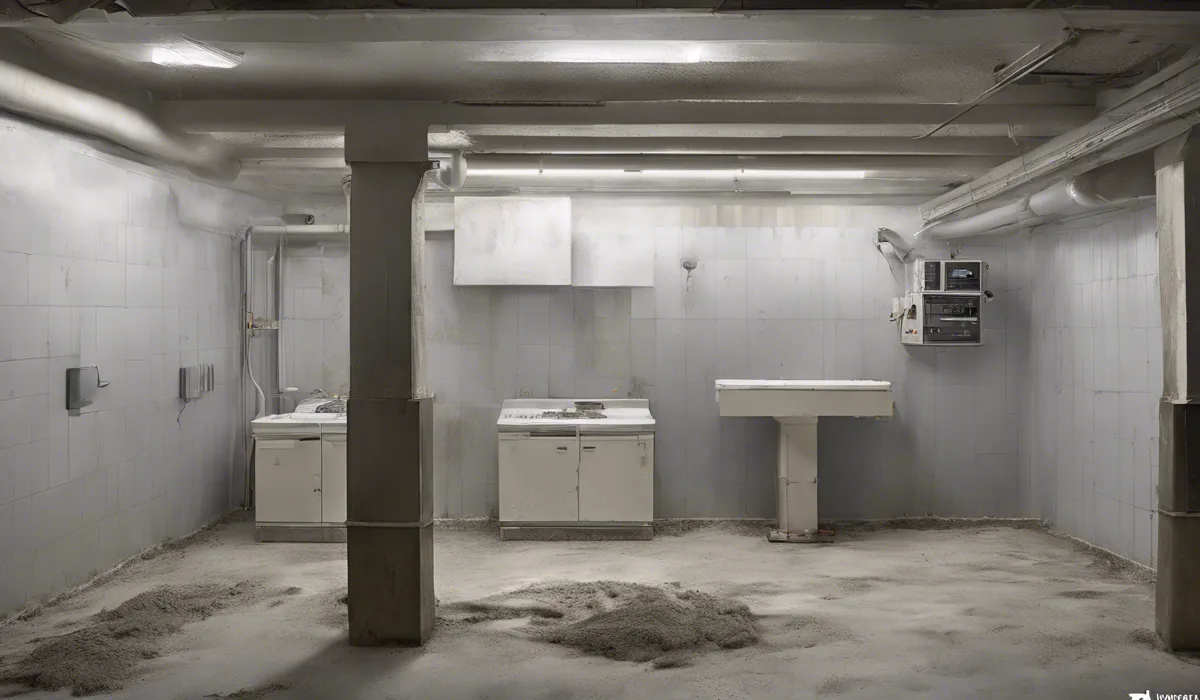To test for mold in your basement, start by visually inspecting for mold growth or musty odors.
If mold is suspected, use a DIY mold test kit from a hardware store, following the instructions carefully. For a thorough assessment, consider hiring a professional mold inspector.
Importance of Mold Testing in Basements

Common Mold Varieties in Basements
Basements often provide the perfect environment for mold to flourish. Darkness, moisture, and limited airflow create conditions where mold spores can settle and grow.
The most common types of mold found in basements include black mold (Stachybotrys chartarum), white mold (Efflorescence), and various other strains such as Penicillium, Aspergillus, and Cladosporium.
Each type has its own appearance and can grow on different surfaces ranging from wood to concrete.
Health Risks Linked to Mold
Exposure to mold can lead to a myriad of health issues. For some, it might cause mild allergic reactions such as sneezing, coughing, and skin irritation.
In others, especially those with compromised immune systems, mold exposure can result in serious conditions like respiratory infections or worsen asthma symptoms.
It is essential to test for mold to protect your family’s health.
Signs You Need Mold Testing
Knowing when to test for mold is crucial. Indicators include musty odors, visible mold growth, recent water damage, or a history of flooding.
Additionally, if your family is experiencing unexplained health issues such as persistent coughs or headaches, it might be time to test for mold.
Regular testing is recommended to prevent mold from becoming a silent problem in your home.
DIY Mold Testing Methods

Spotting Mold with a Visual Check
A thorough visual inspection is the first step in DIY mold testing. Look for discoloration on walls, ceilings, and floors.
Mold can appear in various colors and textures, so be vigilant. Pay special attention to corners, behind furniture, and any other places where moisture accumulates.
A strong, musty smell is also a telltale sign of hidden mold.
At-Home Mold Test Kits
How to Collect Mold Samples?
DIY mold test kits usually include a petri dish and a swab. To collect a sample, you’ll need to swab the suspected area and then transfer the sample to the dish. After sealing it, you must wait for the amount of time specified in the instructions to see if mold grows.
Interpreting Home Test Kit Results
After the waiting period, check the petri dish for growth. Mold presence is indicated by spots or a fuzzy appearance.
However, these kits cannot tell you the type of mold or its concentration, which are crucial for assessing the risk level.
Ensuring Accurate DIY Results
Accuracy in DIY mold testing depends on following instructions meticulously. Always use gloves to prevent contamination and take samples from several areas.
Avoid testing in areas that are overly dusty, as this can skew results. If you’re unsure about the results, it is wise to seek professional confirmation.
Professional Mold Inspection and Testing

When to Call in the Experts?
If you suspect a severe mold issue or if the DIY test results are positive, it’s time to contact a professional.
They are equipped to handle extensive infestations and can provide a more detailed analysis of the mold in your home.
Professional Mold Testing Techniques
Air Sampling for Mold Spores
Professionals often use air sampling to detect mold spores. This process involves capturing air in a device that traps spores on a slide, which is then examined under a microscope. This method can determine the type and concentration of mold in the air.
Surface Sampling for Visible Mold
Surface sampling involves taking samples directly from affected areas with tape or swabs. These samples are analyzed in a lab to identify the mold species present on your basement surfaces.
Bulk Sampling to Assess Contamination Levels
Bulk sampling entails removing materials from your basement to check for mold. This method is useful for assessing the depth and extent of mold penetration in porous materials like insulation or carpet.
Advantages of Professional Over DIY Testing
Professional testing is more thorough than DIY methods. Experts have advanced equipment and techniques at their disposal, offering a comprehensive analysis of mold species and spore counts.
They can also provide a more accurate assessment of the health risks and the necessary remediation steps.
Deciphering Professional Results and Next Steps
After professional testing, you will receive a detailed report outlining the types of mold present, spore counts, and the potential health risks.
Professionals will recommend actions to address the mold issue, which might include cleaning, repairs, or more extensive remediation.
Always ensure you understand the results and the recommended plan to keep your basement and home safe and healthy.
FAQs About Testing Mold in Basement
How can I visually inspect my basement for mold?
Look for any visible signs of mold growth, which might appear as black, white, green, or orange spots on surfaces, and be aware of any musty or earthy odors, which are indicative of mold presence.
What is a DIY mold test kit?
A DIY mold test kit is a package that you can purchase from a hardware store, which allows you to collect samples from your home to then be sent to a lab for testing or to be analyzed using included indicators.
How do I use a DIY mold test kit?
Carefully follow the instructions provided with the kit, which typically involve collecting samples from the air or surfaces in your basement and then either sending them to a lab or assessing them with the provided tools.
When should I consider hiring a professional mold inspector?
If your visual inspection or DIY test indicates possible mold growth, or if you want a more comprehensive assessment, hiring a professional mold inspector is recommended.
What are the benefits of hiring a professional mold inspector?
A professional mold inspector has the expertise and equipment to conduct a thorough assessment, identify mold species, and suggest appropriate remediation strategies.
Final Thoughts
Detecting mold in your basement can begin with a simple visual inspection and sniff test for musty odors.
For more concrete evidence, a DIY mold test kit from a hardware store can be employed with meticulous adherence to the provided instructions.
However, for a comprehensive evaluation, enlisting the services of a professional mold inspector is recommended.
